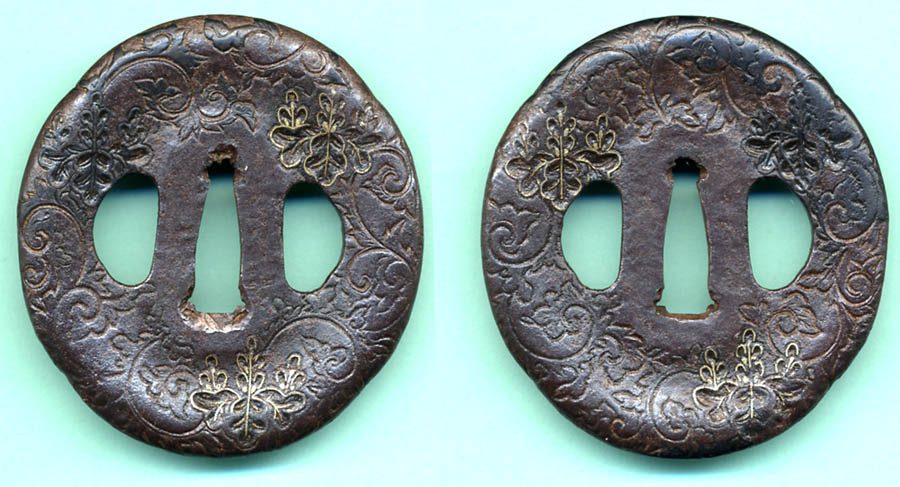|
|
|
|
|
Period: |
Momoyama to late Edo period. |
|
Basic Shape: |
Round, oval, square, cross shape and 'sumiiri'. |
|
Seppa-dai: |
The shape is very similar to that used by the Ko-Shoami but wider, giving the tsuba a slightly heavy appearance. |
|
Hitsu-ana: |
They used the same shapes as the Ko-Shoami workers. |
|
Metal Surface, Inlay: |
High relief inlay, nunome of gold and silver, ten-zogan, suritsuke inlay (rubbed nunome), applied to flat surfaces or ubuzukashi work. The carving is usually of rather poor quality. |
|
Comments: |
The early Edo age was the greatest period for the Shoami and the Kyo-Shoami surpassed all of their provincial relatives. Their designs were richer, more detailed, and far more sophisticated than the other schools who worked in iron plate. From the Kyoho era (1716-35), the Kyo-Shoami show a steady decline, their work bearing no resemblance to its renowned style of 200 years previous. |
 |
KYO-SHOAMI
Momoyama/Early Edo period. (ca 1600) Both sides are carved with elaborate kiri mon and Hideyoshi mon of fine quality. 7.65cm X 7.07cm. The craftsmanship and design seems to be the unsigned work of Shigetsugu (reference H 08510.0) |
Return to Tsuba Artisan School Page
Study Guide | Tsuba | Haynes
Tutorial